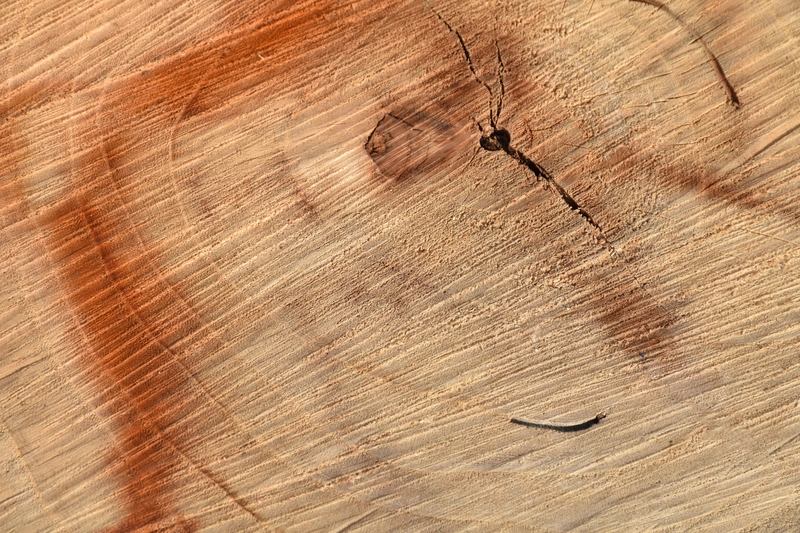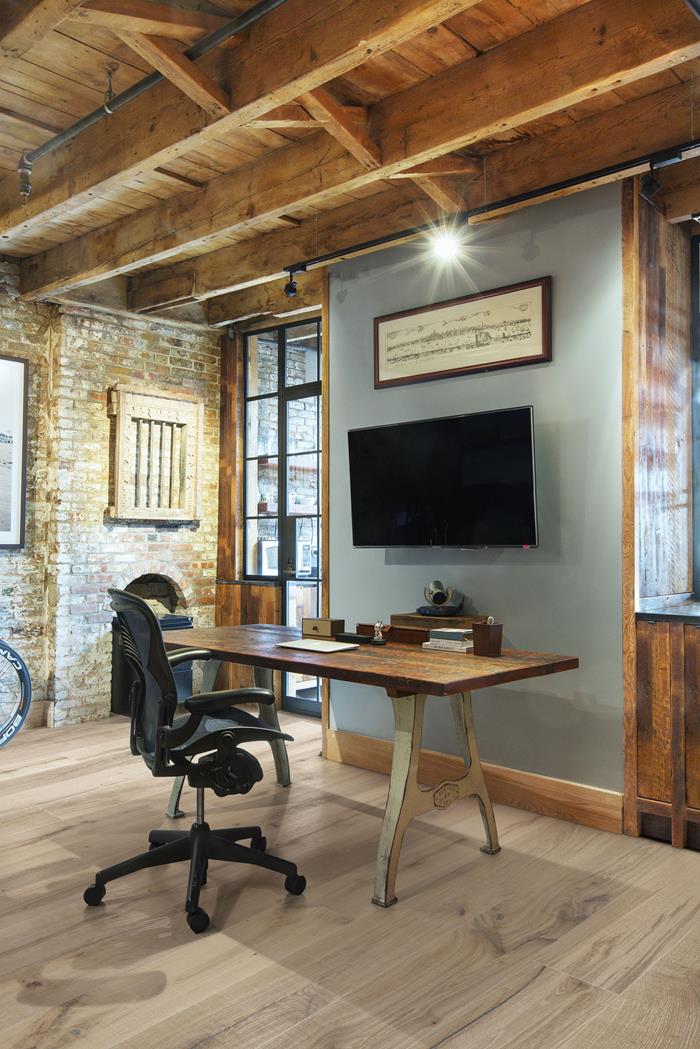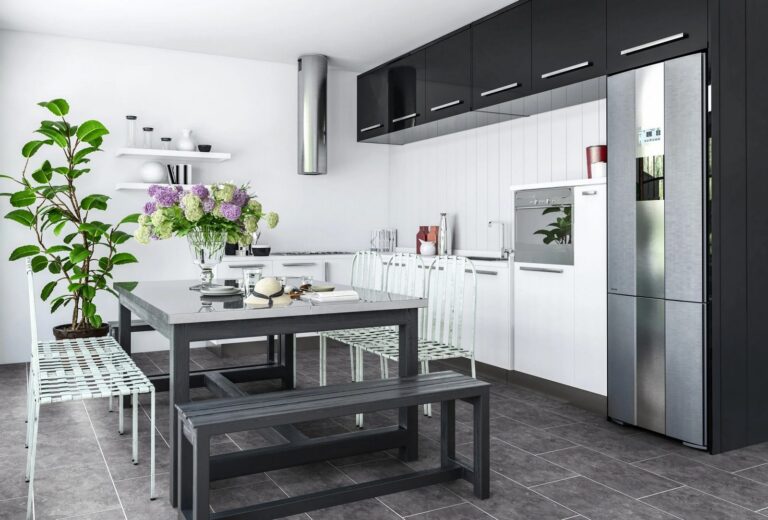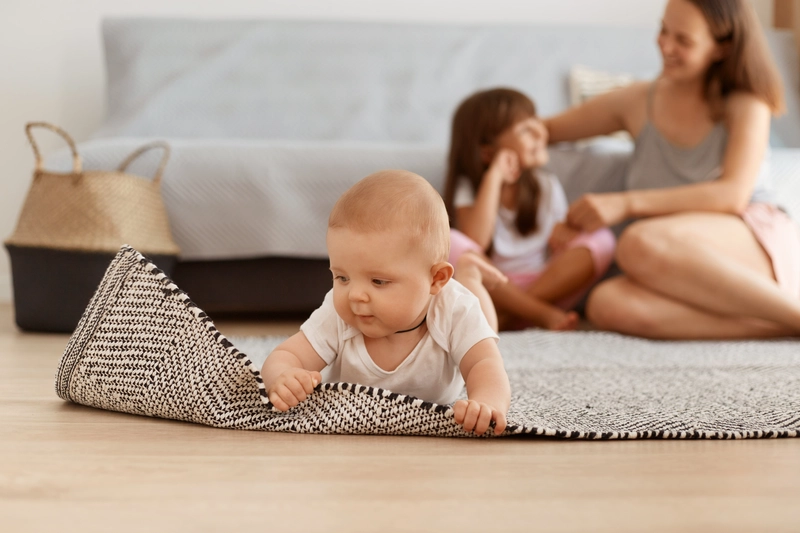Does wood flooring scratch easily? Wood flooring is a timeless choice for both aesthetic appeal and durability, but it’s important to understand its susceptibility to scratches and surface dents.
We will discuss preventative measures, maintenance tips, the benefits of using furniture pads, and repair options, ensuring your investment remains beautiful for years to come. Whether you’re choosing wood for high-traffic areas or looking to keep your floors in top shape, this guide has you covered with tips for both residential and commercial settings.
What Is Wood Flooring?
Wood flooring is a versatile and appealing option for both residential and commercial settings, prized for its durability and aesthetic qualities. It’s made from high-quality wood that offers excellent rejuvenation potential when maintained properly.
Made from high-quality wood, it can enhance the beauty of any space while providing a sturdy surface that can withstand everyday wear and tear.
Various hardwood species, such as oak, hickory, ash, beech, and cherry, are commonly used, each offering unique characteristics and benefits. Additionally, woods such as Ipe and Bamboo provide exotic options with distinct hardness and durability.
Additionally, wood flooring can be refined with different surface applications, making it an ideal choice for those looking to elevate their interior design.
The Types of Wood Flooring
There are several types of wood flooring available, including pre-finished and site-finished flooring, each offering distinct aesthetics and functionalities tailored to diverse customer concerns and environments.
Options range from pre-finished to site-finished wood flooring, with various hardwood species like Oak, Hickory, Ash, and exotic woods like Ipe and Bamboo making their mark in the market.
Additionally, different finishes such as oil-based finishes, lacquers, and varnishes can enhance the durability and appearance of the flooring, improving its wear-and-tear resistance.
The Scratch Resistance Properties of Wood Flooring
Understanding the scratch resistance properties of wood flooring is essential for homeowners and business owners concerned about maintaining a pristine appearance in high-traffic areas. Additionally, knowledge of the sanding process can help in rejuvenating wood floors affected by scratches.
Wood flooring can be susceptible to scratches and surface dents over time, but factors such as the type of wood, the protective finish used, and the overall durability of the flooring can greatly influence its resistance to wear and tear.
Knowledge of these properties helps consumers make informed decisions about their flooring choices.
Factors that Affect the Scratch Resistance of Wood Flooring
Several factors influence the scratch resistance of wood flooring, making it crucial for prospective buyers to consider these aspects before making a purchase. The specific type of hardwood species plays a significant role in determining the flooring’s overall durability, while the surface application, such as finishes and protective coatings, can enhance its resilience against scratches. Understanding these factors ensures long-lasting satisfaction and minimal maintenance for customers.
When evaluating the scratch resistance of flooring, one must take into account the composition and density of the chosen hardwood. For instance, oak typically exhibits greater durability compared to softer species like pine. Different protective finishes are available, each with varying strengths:
- Polyurethane: Offers robust resistance and is ideal for high-traffic areas.
- Oil-based finishes: Provide a natural appearance but may require frequent reapplication to maintain protection.
- Oil-modified urethane: Combines the benefits of both oil and polyurethane.
Such factors significantly impact customer concerns regarding aesthetics, maintenance needs, and overall longevity of their flooring investment, ensuring durability while maintaining the beauty of high-quality hardwood.
How Does the Hardness of Wood Affect its Scratch Resistance?
The hardness of wood is a vital factor that directly impacts the scratch resistance of wood flooring, influencing its suitability for different environments. Hardwoods, like Hickory and Oak, are known for their resilience, making them ideal for high-traffic residential and commercial settings. Softwoods, on the other hand, maybe more prone to scratches and surface dents, necessitating additional care and protective measures.
When considering flooring options, one cannot overlook how the hardness of wood significantly contributes to its longevity and aesthetic appeal. For instance, hardwood species such as Maple, Cherry, and Walnut not only provide a classic look but also demonstrate remarkable toughness compared to their softer counterparts. Many customers express concerns about maintaining their floors in various situations, especially in households with pets or children.
In contrast, softwoods like Pine and Cedar tend to show wear more quickly and can require frequent maintenance to keep their appearance intact. Thus, the choice between hardwood and softwood often boils down to how much durability and resilience a customer needs in their flooring.
Types of Finishes that Can Increase the Scratch Resistance of Wood Flooring
Various finishes can significantly increase the scratch resistance of wooden flooring, providing an extra layer of protection against everyday wear and tear. Oil-based finishes, lacquers, and varnishes are popular choices that not only enhance the appearance of wooden flooring but also contribute to its overall durability and longevity. Additionally, wood-effect flooring can offer similar benefits with easier maintenance.
Selecting the right finish is crucial for homeowners aiming to maintain their flooring’s aesthetic appeal while addressing customer concerns about scratches.
Each type of finish possesses unique characteristics that can profoundly affect both maintenance routines and the flooring’s lifespan.
- Oil-based finishes offer a rich, warm glow and are known for their abrasion resistance. They can take longer to dry and may require periodic reapplication.
- Lacquers dry quickly and create a hard, durable surface, but they can be more susceptible to yellowing over time, which may deter some buyers.
- Varnishes combine the best attributes of oils and lacquers for a robust protective layer, although they can sometimes mask the wood’s natural texture.
Understanding these traits enables homeowners to choose a finish that suits their lifestyle and visitor traffic, resulting in optimal functionality while preserving the flooring’s beauty.
Ultimately, navigating these options contributes to informed decisions, enhancing both the beauty and practicality of wooden floors.
Does Wood Flooring Scratch Easily?
Many potential buyers often ask, “does wood flooring scratch easily?” As this concern significantly influences their purchasing decisions. The use of protective finish and proper surface application can help mitigate these issues.
While wooden flooring can be subject to scratches and surface dents, especially in high-traffic areas, the level of susceptibility largely depends on the type of wood, the protective finish applied, and the overall durability of the flooring. Understanding these factors can help consumers make the best choice for their homes or businesses.
Types of Wood that More Prone to Scratching
Certain types of wood are more prone to scratching than others, affecting their suitability for specific applications. Softer wood species like Pine or Poplar tend to show scratches more readily, making them less ideal for high-traffic residential or commercial settings. In contrast, harder species such as Hickory and Oak offer greater resistance to scratches, ensuring that floors remain visually appealing over time.
When considering the ideal wood type for your space, it is crucial to weigh the pros and cons of each option carefully. For instance, while Pine may be attractive due to its lower price point, its soft texture means that it will show wear much sooner, requiring more frequent refinishing. On the other hand, Oak and Hickory not only endure daily foot traffic better but also maintain their appearance longer, making them a sound investment for:
- Homes: Areas like sitting rooms and kitchens where durability is key.
- Commercial Spaces: Retail environments where aesthetics must also meet function.
- Public Buildings: Places where high footfall can easily damage softer woods.
Choosing the right type of wood not only impacts the longevity of the flooring but also affects maintenance costs and overall satisfaction in the long run.
The Common Causes of Scratches on Wood Flooring
Scratches on wooden flooring can arise from several common causes, impacting their overall appearance and longevity. Employing protective measures like furniture pads can help reduce such damage.
Everyday activities such as moving furniture, high heels, and even pet claws can contribute to surface dents and scratches.
The type of wood and its finish also play a significant role in how susceptible it is to damage. Understanding these factors can help in the selection of more resilient hardwoods and appropriate protective measures.
- For example, softer woods like pine or cedar may show scratches more readily compared to harder varieties such as oak, maple, or Ipe.
- Environmental factors, such as humidity and direct sunlight, can also lead to contraction and expansion, which may result in imperfections, especially in residential settings.
To help alleviate concerns regarding scratches, it’s essential to implement a consistent maintenance routine. Consider using area rugs in high-traffic areas and regularly checking for debris that can cause scratches when walked on. Ensure that pet nails are regularly trimmed to minimise potential scratches. Additionally, using pre-finished flooring can offer added scratch resistance.
Taking these simple steps can significantly enhance the longevity of wooden flooring and retain its natural beauty.
How to Prevent Scratches on Wood Flooring
Preventing scratches on wood flooring is essential for maintaining its appearance and longevity, making it a priority for homeowners and business owners alike, whether in residential settings or commercial areas.
Various strategies can be employed to reduce the risk of scratches, including the use of furniture pads, regular maintenance routines, and the application of protective products. By adopting these practices, consumers can effectively protect their investment in wood flooring, whether it is pre-finished flooring or unfinished.
Some Maintenance Tips to Prevent Scratches on Wood Flooring
Implementing effective maintenance tips is crucial for preventing scratches on wooden flooring and preserving its aesthetic appeal.
To maintain the beauty of these surfaces, homeowners should recognise the significance of routine care, which not only enhances visual appeal but also prolongs the lifespan of the flooring. Regular cleaning using a soft broom or a microfibre mop can help remove dirt and grit that may cause scratches. Placing furniture pads under heavy items can significantly reduce the risk of scratches caused by movement. Hardwoods resilient like Hickory and Oak are particularly good choices for areas prone to wear and tear.
Adopting protective measures like using area rugs in high-traffic zones can further shield the wood from wear. Additionally, choosing harder wood types such as Ash and Beech can enhance scratch resistance.
- For oiled finishes, consider reapplying oil periodically to maintain a protective layer, especially on hardwoods resilient like Cherry and Bamboo.
- For varnished surfaces, avoid using harsh chemicals that can strip the finish.
- Different wood types may require specific cleaners—always check compatibility before use.
By following these tailored strategies, keeping the flooring looking pristine becomes much easier, whether the flooring is pre-finished or unfinished.
Protective Products That Can Be Used on Wood Flooring
There are several protective products available that can enhance the scratch resistance of wood flooring, adding an extra layer of defence against everyday wear and tear. These products include specialised floor waxes, sealants, and coatings designed to protect the finish of the wood, ensuring that it remains visually appealing over time. Employing these protective measures can greatly reduce the occurrence of scratches.
To ensure optimal protection for various wood types, it’s essential to select products tailored to specific finishes and densities. Whether you have pre-finished flooring or unfinished wood, the right protective products can make a significant difference.
For instance, harder woods like oak may benefit from premium sealants that penetrate deeply, while softer woods like pine might require lighter finishes that provide flexibility without compromising aesthetics.
Here are some recommended options:
- Water-Based Polyurethane: Ideal for almost all wood types, it dries quickly and is less toxic.
- Oil-Based Finish: Known for enhancing the natural beauty of the wood but may require longer drying times.
- Wax Finishes: Provides a natural look, perfect for antique or reclaimed woods.
By pairing the right protective product with the specific wood type, homeowners can ensure long-lasting beauty and durability for their flooring.
The Best Wood Flooring Options for High-Traffic Areas
Selecting the best wood flooring options for high-traffic areas is crucial for both aesthetic and practical reasons, ensuring longevity and durability. Harder hardwood species such as Hickory, Oak, and Ipe are ideal choices, as they can withstand significant wear and tear while maintaining their beauty.
Additionally, considering a protective finish can further enhance the flooring’s resilience, making it suitable for busy environments.
Can Scratches on Wood Flooring Be Repaired?
Yes, scratches on wooden flooring can often be repaired, offering a rejuvenation potential that can breathe new life into damaged floors. The repair process can vary depending on the severity of the scratches, with options ranging from simple surface applications to more extensive procedures like the sanding process. Whether in residential settings or commercial spaces, maintaining and repairing wood flooring is crucial for longevity.
Homeowners can choose between DIY methods or hiring professionals, depending on their comfort level and the extent of the damage.
Some DIY Methods for Repairing Scratches on Wood Flooring
There are several effective DIY methods for repairing scratches on wooden flooring, providing budget-friendly options for homeowners looking to maintain their floors. Simple techniques include using wax fillers, touch-up markers, or applying a surface application that matches the wood finish. These methods can help disguise scratches and restore the wood’s appearance without professional assistance.
Before embarking on the repair journey, it is crucial to assess the depth and severity of the scratches. This ensures the selection of the right technique that will best address the issue at hand.
For minor surface scratches, a wax filler is often sufficient. Here’s how:
- Step 1: Choose a wax filler that closely matches the wood colour.
- Step 2: Clean the area around the scratch to remove debris.
- Step 3: Apply the wax filler into the scratch, pressing it in gently.
- Step 4: Smooth the surface using a soft cloth.
For deeper scratches, using a touch-up marker may yield better results. Always ensure to read the product label for compatibility with your specific wood type.
When Should a Professional Be Hired to Repair Scratches on Wood Flooring?
While many scratches on wooden flooring can be repaired through DIY methods, there are instances when hiring a professional is advisable to achieve optimal results. Significant damage, deep scratches, or extensive wear may require expertise in the sanding process and the application of protective finishes to restore the flooring effectively. Homeowners should assess the severity of the damage before deciding whether to attempt repairs themselves or seek professional help.
To determine the right course of action, consider the following criteria:
- Severity of Damage: If the scratches penetrate deeply into the wood, a DIY approach may not suffice. Professionals have the tools and skills to address such issues comprehensively, especially for high-quality hardwoods resilient like Ipe, Hickory, and Oak.
- Time and Effort: Sanding can be a labour-intensive task. Professionals can often complete the job more efficiently than most homeowners.
- Results Expectations: If the goal is to achieve a flawless finish, trusting a professional with experience in the sanding process can ensure the best outcomes.
The benefits of professional expertise extend beyond just scratch removal; they include a thorough understanding of the wood type, proper techniques to preserve the flooring, and recommendations for maintenance. This is especially important for maintaining the integrity and beauty of premium hardwoods such as Ash, Beech, and Cherry.
This is where TEKA Flooring can help. If repair isn’t enough to achieve the flawless look and durability you desire, upgrading to new flooring could be the best investment. With our professional fitting services, TEKA Flooring ensures not only a perfect installation but also offers long-lasting, durable flooring options that can withstand daily wear and tear.
By installing new hardwood floors, you’ll benefit from both enhanced beauty and strength, giving your home the timeless appeal that only quality craftsmanship can deliver. Contact TEKA Flooring today to explore your options and enjoy the best in durability and design!
Read also:

































